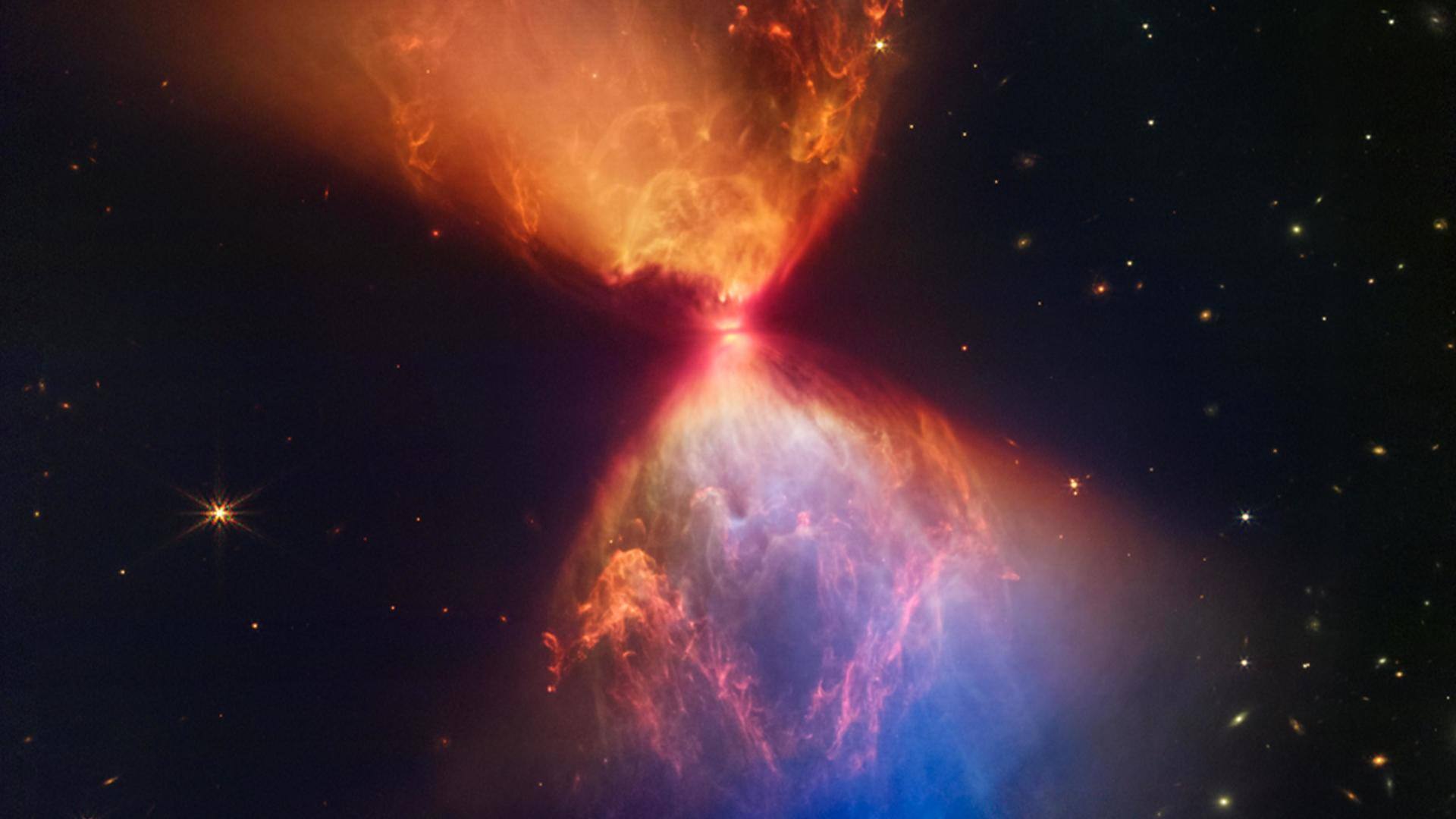
NASA's James Webb telescope captures star formation in stunning detail
What's the story
A new image captured by the James Webb Space Telescope (JWST) reveals a fiery cosmic hourglass encapsulating a protostar within a dark cloud. This protostar—labeled L1527—lying at the central point or the neck of the hourglass, is particularly difficult to spot because it is shrouded by gas and dust. It lies in the Taurus star-forming region which is only visible in infrared light.
Context
Why does this story matter?
NASA's James Webb Space Telescope is simply a technological marvel. Imaging protostars has become possible, thanks to the telescope's near-infrared camera. The captured image provides significant insights into the initial phases of formation of new stars. It also gives us a rough idea of what our Sun, and even our Solar system, might have looked like in the infancy stage.
Definition
First, what is a protostar?
In most galaxies, stars are birthed within nebulas or clouds of dust and gas. The turbulence emerging from deep within these nebulas cause the dust and gases to start collapsing under their own gravitational attraction. As they start collapsing, the material at the center starts heating up forming a dense, hot core known as the protostar. This protostar gradually develops to become a star.
Protostar
L1527 is only 100,000 years old
The protostar L1527 is roughly 100,000 years old. It is classified as a class 0 protostar since it is in the initial phase of star formation. It has a spherical shape but is unstable, and is estimated to have approximately 20-40% of the mass of our Sun. Importantly, L1527, being a protostar, does not generate its own energy by nuclear fusion of hydrogen.
Process
The protostar is evolving to form a star
The image reveals that the surrounding molecular cloud is drawn to the center, where the protostar L1527 lies. As the material falls in, it spirals around the center, forming a dense accretion disk, which feeds material to the protostar. As it gains more mass and compresses further, the temperature of its core increases, eventually reaching the threshold for nuclear fusion of hydrogen.
The image
Blue regions depict areas where the dusty layers are thin
The dark line at the center of the hourglass is a protoplanetary disk, which is roughly the size of our solar system, and light from the protostar is cast above and below this disk. The vivid colors are due to dusty layers between the Webb telescope and the clouds. The blue areas are where the dust is thinnest while orange areas depict thicker areas.
More details
The image also reveals filaments of molecular hydrogen
"Webb also reveals filaments of molecular hydrogen that have been shocked as the protostar ejects material away from it," explained NASA in its official blog post. "Shocks and turbulence inhibit the formation of new stars, which would otherwise form all throughout the cloud," the space agency added. "As a result, the protostar dominates the space, taking much of the material for itself."